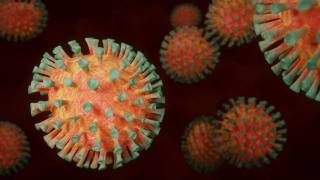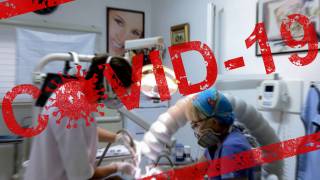Do Ultraviolet-C Lamps Kill This Coronavirus?

Given the current outbreak of COVID-19 disease, consumers everywhere are interested in learning how ultraviolet-C (UVC) lamps disinfect surfaces in the home or similar spaces.
The US Food and Drug Administration (FDA) published answers to various consumers’ questions on August 19, 2020, about the use of these UVC lamps for SARS-CoV-2 coronavirus disinfections.
The effectiveness of UVC lamps inactivating the SARS-CoV-2 virus is unknown because there is limited published data about the wavelength, dose, and duration of UVC radiation required to inactivate the SARS-CoV-2 virus.
It is important to recognize that, generally, UVC cannot inactivate a virus or bacterium if it is not directly exposed to UVC. In other words, the virus or bacterium will not be inactivated if it is covered by dust or soil, embedded in porous surfaces or on the underside of a surface, says the FDA.
UVC radiation is commonly used inside air ducts to disinfect the air. This is the safest way to employ UVC radiation because direct UVC exposure to human skin or eyes may cause injuries, and the installation of UVC within an air duct is less likely to cause exposure to skin and eyes, says the FDA.
Four other FAQs published by the FDA are excerpted below:
Q: Can UVC lamps inactivate the SARS-CoV-2 coronavirus?
UVC radiation is a known disinfectant for air, water, and nonporous surfaces. UVC radiation has effectively been used for decades to reduce the spread of bacteria, such as tuberculosis. For this reason, UVC lamps are often called "germicidal" lamps.
And UVC radiation has been shown to destroy the outer protein coating of the SARS-Coronavirus, which is a different virus from the current SARS-CoV-2 virus.
In addition to understanding whether UVC radiation is effective at inactivating a particular virus, there are also limitations to how effective UVC radiation can be at inactivating viruses, generally.
UVC radiation can only inactivate a virus if the virus is directly exposed to the radiation. Therefore, the inactivation of viruses on surfaces may not be effective due to blocking of the UV radiation by soil, such as dust, or other contaminants such as bodily fluids.
Many of the UVC lamps sold for home use are of low dose, so it may take longer exposure to a given surface area to potentially provide effective inactivation of a bacteria or virus.
Q: Can UVB or UVA radiation inactivate the SARS-CoV-2 coronavirus?
UVB and UVA radiation is expected to be less effective than UVC radiation at inactivating the SARS-CoV-2 coronavirus.
Currently, there is some evidence that UVB radiation is effective at inactivating other SARS viruses (not SARS-CoV-2). However, it is less effective than UVC at doing so and is more hazardous to humans than UVC radiation because UVB radiation can penetrate deeper into the skin and eye.
And, UVB is known to cause DNA damage and is a risk factor in developing skin cancer and cataracts. UVA radiation is less hazardous than UVB radiation but is also significantly (approximately 1,000 times) less effective than either UVB or UVC radiation at inactivating other SARS viruses.
Q: Is it safe to use a UVC lamp for disinfection purposes at home?
The FDA says to consider both the risks of UVC lamps to people and objects and the risk of incomplete inactivation of viruses. UVC lamps used for disinfection purposes may pose potential health and safety risks depending on the UVC wavelength, dose, and duration of radiation exposure.
The risk may increase if the unit is not installed properly or used by untrained individuals. And direct exposure of skin and eyes to UVC radiation from some UVC lamps may cause painful eye injury and burn-like skin reactions.
Never look directly at a UVC lamp source, even briefly.
Furthermore, some UVC lamps generate ozone. Ozone inhalation can be irritating to the airway. And some UVC lamps contain mercury. Because mercury is toxic even in small amounts, extreme caution is needed in cleaning a lamp that has broken and in disposing of the lamp.
Q: Are all lamps that produce UVC radiation the same?
Not all UVC lamps are the same. Lamps may emit very specific UVC wavelengths (like 254 nm or 222 nm), or they may emit a broad range of UV wavelengths. Some lamps also emit visible and infrared radiation. The wavelengths emitted by the lamp may affect the lamp’s effectiveness at inactivating a virus and may impact the health and safety risks associated with the lamp.
Some lamps emit multiple types of wavelengths.
There is some evidence that excimer lamps, with peak wavelengths of 222-nm may cause less damage to the skin, eyes, and DNA than the 254 nm wavelength, but long-term safety data is lacking.
For questions about this information, contact 1-888-INFO-FDA or the Office of Health Technology 7: Office of In Vitro Diagnostics and Radiological Health (OIR)/Division of Radiological Health (DRH) at [email protected].
CoronavirusToday publishes research-based news.
Our Trust Standards: Medical Advisory Committee
























